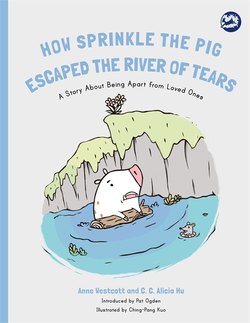Читать книгу How Sprinkle the Pig Escaped the River of Tears - Anne Westcott - Страница 3
На сайте Литреса книга снята с продажи.
ОглавлениеIntroduction
The body possesses innate capacities to ensure we make it through distressing situations. This inborn wisdom of the body inspired me to develop Sensorimotor PsychotherapySM (SP) decades ago. I have made it my life’s work to elucidate this largely untapped resource so that we can engage it to help ourselves and others heal from severe stress, trauma, and attachment disruption.
The Hidden Strengths Therapeutic Children’s Books series captures this essential spirit and intention of Sensorimotor PsychotherapySM. The authors render the core concepts of this approach accessible to both caregivers and young people struggling in the aftermath of overwhelming experiences. The stories do so with sensitivity and particular attention to illustrating the bodily experience of the child in an engaging and compelling manner.
Understanding the language of the body helps us make sense of the often confusing behaviors following trauma and separation from loved ones. We freeze, run away, collapse, fight, hide, cry for someone bigger and wiser to help us, and even dissociate or do things we wouldn’t normally do, like steal, to make it through. These instinctive bodily survival defenses are automatically engaged in times of threat. Each of us employs the defensive response(s) that will work best in a particular moment given the immediate circumstances, so there is no single best survival strategy. These compelling stories emphasize the hidden strengths in the characters’ survival behaviors, staying true to the foundational principle of SP that the physical actions taken are the person’s best attempt to respond to the situation they face.
Over time, we develop habits of defensive responses, often repeatedly engaging just one or two survival defenses. These then become our default behaviors in the face of subsequent threats, which is compassionately and wisely illustrated by the appealing characters in the stories in the series. Anyone helping children will find new ways to look at the often challenging and misunderstood behaviors children display after stress. The stories also encourage caregivers and children to become curious about the survival functions these behaviors may serve.
As the authors, both trained in Sensorimotor PsychotherapySM, describe how the characters adapt to challenging circumstances, the body’s wisdom is revealed. Each character favors a different survival defense, which is cleverly portrayed through the character’s movement, posture, and physiology. The pictures and rich descriptive text convey the real-life bodily and emotional experience of so many children, without evaluation, judgement, or interpretation. The stories describe events and behaviors from each character’s viewpoint, offering a variety of perspectives. Doing so enhances understanding of how the body responds and influences the meaning we make of what we see, hear, and feel. The ability to gain perspective, to stay curious, and to experiment are core to Sensorimotor PsychotherapySM and woven into each story. Children will feel relieved and understood as they recognize themselves and their peers in the myriad struggles of the characters. Behaviors children might have perceived as ineffective or worse, a confirmation of their own badness, may very well be transformed into a strength that can be adapted to help them thrive. Our bodies adapt via movement, posture, and physiology.
The supplements following the stories will help caregivers recognize the signs of these survival strengths in the simple body clues of gesture, posture, tone of voice, facial expression, eye gaze, and movement. This is what I have termed the “somatic narrative” core to Sensorimotor PsychotherapySM. When one understands the language the body uses to tell the story of distress, puzzling and confusing behaviors by children begin to make more sense. When we can make sense of our children’s behaviors, we are better equipped to respond in flexible and sensitive ways to help our children feel better in their bodies, hearts, and minds.
Pat Ogden, Founder, Sensorimotor Psychotherapy Institute, 2017
